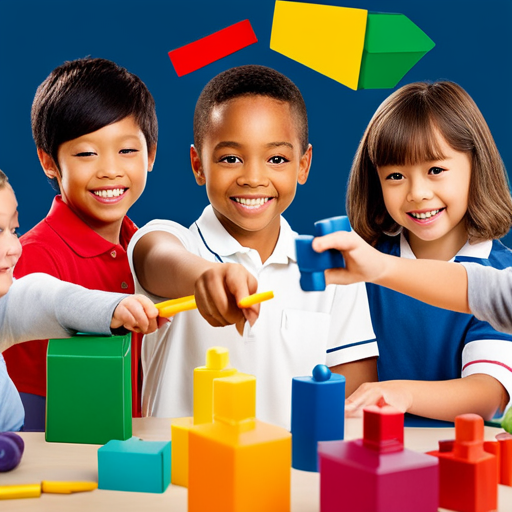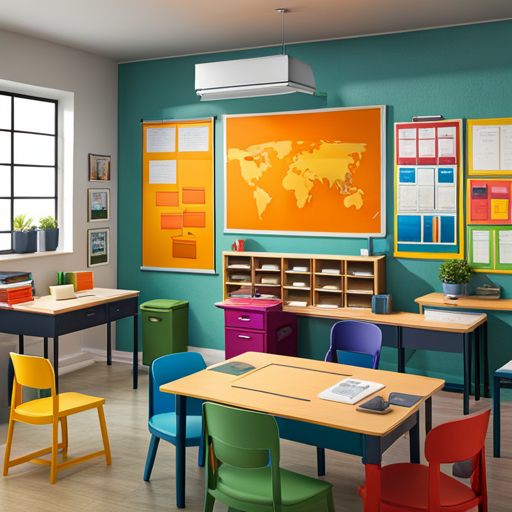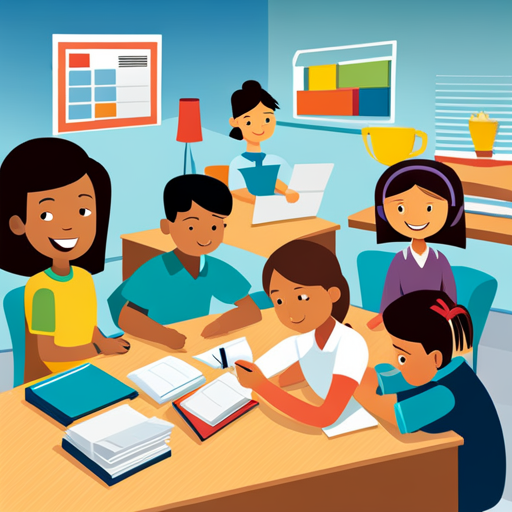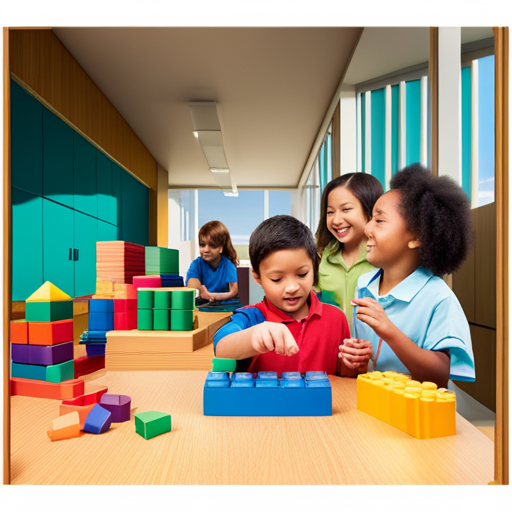"Cherishing Little Steps - A Haven for Baby and Family Journeys"
Understanding Childhood Learning Styles
Do you ever feel like understanding your child’s learning style is as tricky as decoding a secret message? Well, fear not, because in this guide, we will unravel the mysteries of childhood learning styles together.
Just like a compass guiding you through uncharted territory, understanding your child’s unique learning style can be the key to unlocking their full potential.
By delving into the fascinating world of visual, auditory, and kinesthetic learning styles, you will gain valuable insights into how your child absorbs and retains information.
Armed with this knowledge, you will be able to tailor your teaching strategies and create a nurturing, multimodal learning environment that supports your child’s individual journey towards academic success.
So, let’s embark on this enlightening journey together!
Key Takeaways
- Understanding your child’s learning style greatly impacts their academic success and overall development.
- Different learning environments influence a child’s ability to absorb and retain information.
- Tailoring resources and tools to enhance their learning experience supports their individual needs.
- Visual, auditory, and kinesthetic are the main types of learning styles.
The Importance of Childhood Learning Styles

Your child’s learning style plays a crucial role in their educational journey. Understanding how they learn best can greatly impact their academic success and overall development. One important factor to consider is the impact of learning environments on your child’s learning style.
Research suggests that different learning environments can greatly influence a child’s ability to absorb and retain information. Some children thrive in a quiet and structured environment, while others may need a more interactive and hands-on approach. By paying attention to your child’s preferences, you can create a conducive learning environment that suits their individual needs.
As a parent, you play a vital role in supporting your child’s learning style. By observing their behaviors and preferences, you can identify their strengths and weaknesses. This knowledge will help you provide the necessary resources and tools to enhance their learning experience. For example, if your child is an auditory learner, you can encourage them to listen to educational podcasts or audiobooks. If they’re a visual learner, you can incorporate visual aids and diagrams into their study materials.
Types of Learning Styles

To further explore the impact of learning environments on your child’s educational journey, it is important to understand the different types of learning styles. Each child has their own unique way of absorbing information and processing it. By recognizing and catering to their learning style preferences, you can help your child maximize their potential and optimize their learning experience.
There are several different learning styles that have been identified by researchers. These styles can be categorized into three main types: visual, auditory, and kinesthetic. Here is a table that provides a brief overview of each learning style:
| Learning Style | Description |
|---|---|
| Visual | Learners prefer to see and visualize information through images, charts, and diagrams. They often benefit from using flashcards, color-coding, and mind maps. |
| Auditory | Learners prefer to listen and hear information. They thrive in discussions, lectures, and audio-based learning materials. They may find it helpful to record lectures or read aloud to themselves. |
| Kinesthetic | Learners prefer to engage in hands-on activities and physical movement. They learn best through touch, manipulation, and experimentation. They often benefit from using manipulatives, role-playing, and interactive simulations. |
Understanding your child’s learning style can help you tailor their educational experiences to their individual needs. By incorporating strategies and techniques that align with their preferred learning style, you can enhance their engagement, comprehension, and retention of information.
Visual Learning Style

How can visual learners best absorb and process information?
Visual learners are individuals who learn best through seeing and observing information. If you’re a visual learner, there are various techniques you can employ to enhance your learning experience and maximize your understanding.
Here are four visual learning techniques that can greatly benefit you:
-
Mind maps: Create visual diagrams or maps to organize and connect information. This helps you visualize relationships between concepts and aids in memory retention.
-
Graphic organizers: Utilize tools such as charts, tables, and diagrams to visually represent information and its structure. This allows for easier comprehension and recall.
-
Visual aids: Incorporate images, videos, and presentations into your learning process. Visual stimuli can enhance your understanding and engage your visual senses.
-
Color coding: Use different colors to categorize and highlight important information. This method helps you to visually differentiate and remember key concepts.
Auditory Learning Style
What are some effective techniques for auditory learners to absorb and process information? Auditory learners benefit from using their sense of hearing to understand and remember information. They prefer listening to lectures, discussions, and audio recordings rather than reading or visual aids. To cater to their learning style, teachers and parents can utilize specific teaching methods that enhance auditory learning.
One effective technique is to incorporate auditory elements into lessons. For example, teachers can use videos or podcasts that include verbal explanations and discussions. Another method is to encourage auditory learners to participate in group discussions or debates, where they can engage in oral communication and listen to different perspectives. Additionally, providing auditory learners with audio recordings or reading materials accompanied by audio versions can be beneficial.
To further support auditory learners, it is essential to create a conducive learning environment. This includes minimizing distractions and background noise, as well as providing opportunities for auditory learners to repeat and practice information orally. Teachers can also use mnemonic devices, such as songs or rhymes, to help auditory learners remember important concepts.
Here is a table summarizing some effective teaching methods for auditory learners:
| Teaching Methods for Auditory Learners |
|---|
| Use audio recordings or podcasts |
| Encourage group discussions |
| Provide audio versions of reading materials |
| Minimize distractions and background noise |
| Incorporate mnemonic devices, such as songs or rhymes |
Kinesthetic Learning Style
For kinesthetic learners, the best way to absorb and process information is through hands-on activities and physical movement. This learning style is characterized by a need for movement and a preference for engaging their bodies in the learning process. Here are four reasons why kinesthetic learning can be so effective and engaging:
-
Enhanced Retention: When kinesthetic learners physically engage with the material, it helps them form stronger connections in their brain, leading to better retention and recall of information.
-
Active Engagement: Kinesthetic learners thrive when they can actively participate in their learning. Hands-on activities allow them to fully engage with the material, increasing their understanding and enjoyment of the topic.
-
Multi-Sensory Experience: Learning through movement provides kinesthetic learners with a multi-sensory experience. By using different senses simultaneously, they can better process and understand information.
-
Improved Focus: Kinesthetic learners often struggle with maintaining focus during traditional classroom settings. Incorporating movement and hands-on activities helps them stay engaged and attentive, leading to improved concentration and learning outcomes.
Identifying Your Child’s Learning Style

Discovering your child’s learning style is crucial for their academic success. Understanding how they learn best can help you as a parent provide the right support and resources to enhance their learning experience. There are various learning style assessments available that can help you identify your child’s preferred learning style. These assessments typically focus on three main styles: visual, auditory, and kinesthetic. To help you get started, here is a table that outlines the characteristics of each learning style:
| Learning Style | Characteristics |
|---|---|
| Visual | Learns best through seeing and observing. They prefer visual aids, diagrams, and charts. |
| Auditory | Learns best through listening and speaking. They excel in discussions, lectures, and verbal instructions. |
| Kinesthetic | Learns best through physical movement and hands-on activities. They enjoy practical experiments and role-playing. |
Parental involvement is key in identifying your child’s learning style. Observe their behavior and preferences during various learning activities. Pay attention to how they respond to different teaching methods and materials. Additionally, consider utilizing learning style assessments that are available online or through educational institutions. By understanding your child’s learning style, you can tailor their learning experiences to better suit their needs, helping them thrive academically.
Adapting Teaching Strategies for Visual Learners

To effectively support your visual learner, incorporate a variety of visual aids and materials into their learning experience. By utilizing teaching techniques that cater to their specific learning style, you can enhance their understanding and retention of information.
Here are some strategies to consider:
-
Use visual aids such as charts, diagrams, and graphs to illustrate concepts and relationships. These visual representations can help visual learners grasp abstract ideas and make connections.
-
Incorporate videos and multimedia presentations into your lessons. Visual learners often excel when information is presented in a dynamic and engaging manner.
-
Encourage note-taking and the use of color coding. Visual learners benefit from organizing information in a visually appealing way, such as using different colors for different topics or categories.
-
Provide hands-on activities and opportunities for visual learners to engage with materials. This can include using manipulatives, models, or real-life examples to facilitate their understanding.
Adapting Teaching Strategies for Auditory Learners

To effectively support auditory learners, incorporate interactive discussions and verbal explanations into their learning experience. Adapting the curriculum to engage auditory learners requires utilizing teaching strategies that cater to their preference for auditory information processing.
One way to do this is by incorporating group discussions and debates into the lesson plans. This creates an interactive environment where auditory learners can actively participate and engage in conversation with their peers, allowing them to process information more effectively.
Verbal explanations are also crucial for engaging auditory learners. Teachers can provide clear and concise explanations, using descriptive language and providing examples to enhance understanding. Additionally, incorporating audio resources such as podcasts or recorded lectures can be beneficial for auditory learners, as they can listen and absorb information at their own pace.
Another effective strategy is the use of mnemonic devices or rhymes. Auditory learners tend to have a strong sense of rhythm and melody, making this technique particularly effective for them. By incorporating catchy rhymes or songs into the curriculum, auditory learners can remember and recall information more easily.
Adapting Teaching Strategies for Kinesthetic Learners

To effectively cater to the learning needs of kinesthetic learners, it’s important to incorporate hands-on activities and movement-based exercises into the curriculum. Kinesthetic learners thrive when they can physically engage with the material, allowing them to fully comprehend and retain information. By providing opportunities for movement and hands-on experiences, educators can create an environment that supports kinesthetic learners’ unique learning style.
Here are four strategies to adapt teaching for kinesthetic learners:
-
Incorporating movement into lessons: Kinesthetic learners benefit from physical movement, so try incorporating activities that involve walking, stretching, or even dancing into the lesson. This helps to engage their bodies and minds, enhancing their understanding and retention of the material.
-
Providing hands-on activities: Kinesthetic learners learn best through touch and manipulation. Incorporate hands-on activities such as experiments, role-playing, or building models to facilitate their learning process.
-
Utilizing sensory materials: Incorporate sensory materials like sand, clay, or textured objects to engage kinesthetic learners’ sense of touch. This allows them to interact with the material in a way that’s stimulating and meaningful to them.
-
Encouraging physical expression: Create opportunities for kinesthetic learners to express themselves physically, such as through drama, sports, or dance. This not only helps them to process information but also allows them to showcase their understanding in a way that aligns with their learning style.
Creating a Multimodal Learning Environment

Enhance learning outcomes by fostering a multimodal environment that caters to diverse learning styles. Designing effective learning spaces and incorporating technology in learning are key strategies to create such an environment.
To help you understand the importance of creating a multimodal learning environment, let’s take a look at the table below:
| Learning Style | Characteristics |
|---|---|
| Visual Learners | Learn best through images, charts, and diagrams |
| Auditory Learners | Learn best through listening and speaking |
| Kinesthetic Learners | Learn best through hands-on activities and movement |
| Reading/Writing Learners | Learn best through reading and writing activities |
| Multimodal Learners | Learn best through a combination of different modalities |
By designing effective learning spaces, you can provide visual aids such as posters, charts, and diagrams to cater to visual learners. Additionally, incorporating technology in learning can help auditory learners by providing audio recordings or videos, and kinesthetic learners by incorporating interactive activities and simulations.
Creating a multimodal learning environment not only supports the diverse learning needs of students but also engages them in a more active and meaningful way. By incorporating different modalities, you can create a dynamic and interactive learning experience that promotes deeper understanding and retention of information.
Supporting Your Child’s Learning Journey

Support your child’s learning journey by providing tailored support and resources that align with their individual learning style. Parental involvement plays a crucial role in helping children thrive academically. By actively participating in your child’s learning process, you can create a nurturing environment that promotes their growth and development.
Start by conducting learning style assessments to gain insights into how your child learns best. Understanding their preferred learning style, whether it’s visual, auditory, kinesthetic, or a combination of these, will allow you to customize their learning experiences. This tailored approach will enhance their engagement, motivation, and overall learning outcomes.
To support your child’s learning journey effectively, consider the following:
-
Provide materials and resources that cater to their learning style. For visual learners, use visual aids such as charts, diagrams, and videos. Auditory learners benefit from listening to lectures or discussions, while kinesthetic learners thrive through hands-on activities.
-
Create a designated study area that’s free from distractions. This will help your child focus and concentrate on their learning tasks.
-
Encourage regular communication with teachers to stay informed about your child’s progress and any areas that may need extra attention.
-
Celebrate achievements and milestones along the way. Positive reinforcement and encouragement foster a love for learning and boost self-confidence.
Frequently Asked Questions
What Are Some Common Misconceptions About Childhood Learning Styles?
You might have some misconceptions about childhood learning styles. These misconceptions can impact how education is approached. It’s important to understand the truth about learning styles to better support children’s educational needs.
How Do Genetics and Environment Influence a Child’s Learning Style?
Genetics and environment both play a role in shaping your learning style. Nature and nurture work together to influence how you learn. It’s not just about genetics or environment, but the interaction between the two.
Are There Any Negative Effects of Not Understanding and Adapting to a Child’s Learning Style?
Not understanding and adapting to your child’s learning style can have negative consequences. It is important to provide individualized education to meet their needs and maximize their potential.
Can a Child’s Learning Style Change Over Time?
Your child’s learning style can change over time due to various factors, including exposure to technology and their own personal development. Understanding these influences can help you better adapt to their changing needs.
Are There Any Specific Learning Techniques or Tools That Are Effective for All Learning Styles?
There are a variety of effective techniques and tools available that can accommodate different learning styles. By using strategies such as visual aids, hands-on activities, and incorporating technology, you can create an inclusive learning environment for all students.
Conclusion
In conclusion, understanding and catering to your child’s unique learning style is essential for their educational development.
By recognizing whether they’re visual, auditory, or kinesthetic learners, you can adapt teaching strategies to suit their needs.
Creating a multimodal learning environment that incorporates different styles can enhance their learning experience.
Supporting your child’s learning journey with these insights will foster their academic success and provide them with the tools they need to thrive in their educational pursuits.



child porn
child porn
порча на смерть снять
приворот вызов мужчины
Помощь мага – https://vmgj2.wordpress.com приворот встать пяткой на фото
А также:
– приворот сильный на тоску
– книга черная магия привороты
приворот месячной кровью кто делал
приворот на крестик
приворот в домашних условиях на воду
заклинание на приворот любимого
как можно сделать приворот на девушку
на смерть плода порча
как сделать порчу на смерть человека
самая действенная порча на смерть
навести порчу по фото на смерть
порча на смерть что происходит
порча на смерть как отмолить
черные привороты на любовь на женщину
приворот на вольтах
сильный приворот на любимого на расстоянии читать в домашних условиях
приворот женатого мужчины без фото
приворот за один день читать на парня
приворот зомбирование
как сделать приворот самостоятельно
белый приворот без последствия в домашних условиях
как убрать приворот с мужчины сделанный другой женщиной в домашних условиях
приворот мужа на месячные
приворот на мужчину без последствия сразу действует в домашних
приворот со словами
снять приворот с сына
приворот на убывающую луну на любовь мужчины читать
чистка от приворотов
приворот как понять что тебя приворожили
любовный приворот на мужчину читать в домашних условиях
как избавить человека от приворота молитвами
приворот любимой девушки
приворот на мужа читать в домашних условиях который точно сработает днем
Good post! We will be linking to this particularly great post on our site. Keep up the great writing
skin allergy tablets list generic name for allergy pills claritin allergy sinus 12hr costco
sleeping tablets prescribed by doctors provigil 100mg usa
deltasone 5mg ca buy prednisone 20mg pills
anti nausea medication from pharmacy over counter nausea medicine
best treatment for teenage pimples buy generic accutane online dermatologist specializes in acne
best prescription allergy pills buy aristocort 4mg online does benadryl make you sweat
most common nausea medication allopurinol 300mg drug
order isotretinoin 40mg generic buy isotretinoin generic where can i buy accutane
generic amoxil order amoxil 250mg sale buy amoxicillin 500mg without prescription
order sleeping tablets online uk cost melatonin
purchase azithromycin generic azithromycin pills azithromycin 500mg uk
buy gabapentin 100mg online cheap buy gabapentin 100mg online
azithromycin us azipro 500mg generic buy azithromycin 250mg pill
buy lasix for sale diuretic furosemide uk
generic omnacortil 20mg omnacortil where to buy purchase prednisolone generic
order amoxil 500mg without prescription amoxicillin price amoxicillin 250mg cheap
buy doxycycline medication order doxycycline sale
albuterol ca buy albuterol pill ventolin brand
cost amoxiclav buy clavulanate
cheap levothroid pills buy generic synthroid for sale buy synthroid 150mcg without prescription
buy vardenafil 20mg pills levitra price
clomid 50mg without prescription clomiphene 100mg over the counter clomiphene tablet
how to get zanaflex without a prescription buy generic tizanidine for sale generic tizanidine 2mg
prednisone 40mg usa prednisone 5mg for sale prednisone 20mg sale
purchase rybelsus pill semaglutide 14 mg without prescription semaglutide 14 mg tablet
purchase isotretinoin order generic accutane 40mg buy accutane 20mg pills
rybelsus 14 mg without prescription buy rybelsus 14mg without prescription order rybelsus 14 mg generic
albuterol tablet brand ventolin ventolin for sale online
amoxicillin 500mg tablet buy amoxil paypal purchase amoxicillin
order augmentin 375mg sale cheap augmentin buy augmentin 625mg generic
purchase azithromycin pill azithromycin without prescription order azithromycin 250mg sale
levoxyl pills levothyroxine oral levothroid pills
order omnacortil generic order generic prednisolone purchase prednisolone pill
clomiphene over the counter clomid 50mg uk order clomid 100mg sale
gabapentin 800mg pills gabapentin cheap gabapentin without prescription
furosemide where to buy buy generic lasix 100mg buy furosemide online diuretic
viagra canada buy sildenafil pills viagra 100mg canada
doxycycline 100mg us cost doxycycline 100mg order doxycycline 100mg generic
purchase rybelsus pill buy semaglutide 14 mg without prescription buy rybelsus tablets
best online casino for money poker online play online blackjack best
order vardenafil 20mg generic levitra 10mg oral order levitra 20mg for sale
lyrica medication order lyrica buy lyrica generic
plaquenil where to buy buy generic plaquenil online buy generic hydroxychloroquine for sale
cheap aristocort cost aristocort 4mg aristocort 10mg pill
cialis online buy buy cialis 40mg without prescription cialis overnight
buy generic clarinex buy desloratadine 5mg without prescription buy clarinex cheap
cenforce canada cenforce online cenforce drug
buy claritin 10mg pill claritin where to buy loratadine 10mg cost
buy generic chloroquine over the counter buy chloroquine 250mg online chloroquine 250mg brand
metformin online buy buy generic metformin 500mg order glucophage 1000mg generic
buy orlistat 60mg without prescription diltiazem 180mg cheap buy diltiazem without a prescription
order lipitor generic order atorvastatin 40mg for sale buy lipitor no prescription
brand norvasc 10mg buy amlodipine 10mg generic order generic norvasc 10mg
purchase acyclovir generic buy zyloprim medication order allopurinol 100mg sale
buy zestril 10mg sale buy lisinopril 2.5mg online zestril 2.5mg over the counter
order generic rosuvastatin 10mg purchase crestor generic zetia pills
buy generic omeprazole 20mg prilosec 10mg sale omeprazole tablet
motilium 10mg ca buy generic tetracycline 500mg sumycin 250mg uk
metoprolol online buy buy lopressor 50mg metoprolol oral
order cyclobenzaprine for sale buy baclofen 25mg pill buy ozobax for sale
buy toradol 10mg sale purchase colcrys sale buy colchicine sale
generic atenolol 100mg tenormin 50mg oral buy tenormin 50mg